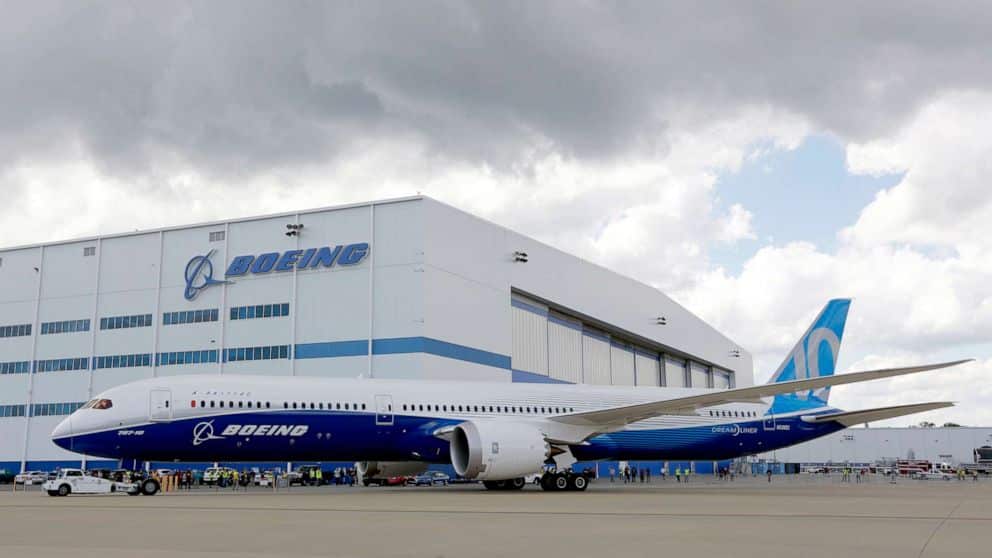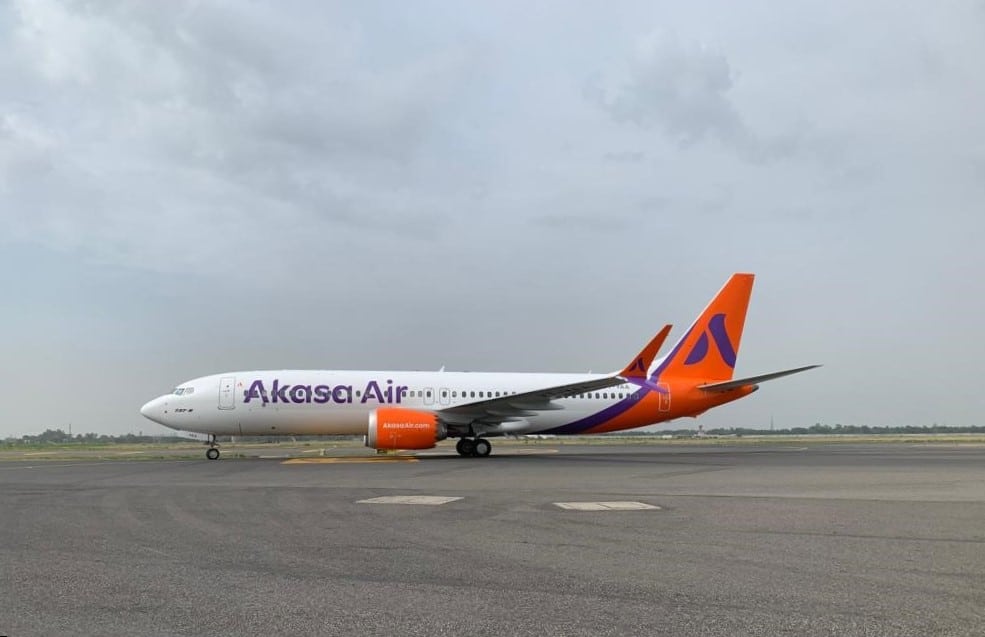Aerospace
Boeing to shift 150 finance and IT jobs to India from the US
Boeing, an American aerospace company, will shortly relocate 150 IT and finance jobs from the United States to India

Boeing, a prominent American aerospace company, will shortly relocate 150 IT and finance jobs from the United States to India. The corporation states that it will have 10,000 roles in 2022 and is not at all eliminating jobs.
Next Business Strategy for Boeing
Boeing is reportedly moving the majority of the financial and IT work to India, according to the Seattle Times. because these tasks are completed more inexpensively. Additionally, Boeing fired a large number of workers during a pre-covid epidemic, although it later employed more people as business slowly recovered.
According to Boeing, it is modifying its business strategy and trying to put more emphasis on the innovation and engineering division. This year, Boeing will eliminate the majority of white-collar employment in the US. Boeing plans to reduce costs, boost output, and streamline operations.
10 things we must know about Vistara Airlines(Opens in a new browser tab)
Over the past few years, we have streamlined our organizational structure to simplify it and direct more resources toward product development, manufacturing, and engineering. As a result of the adjustments that many of our corporate units, including IT and finance, have made to better their operations, there has been a decrease in employment numbers across a number of corporate departments.
China and Russia are factors.
Earlier, the majority of Boeing’s work was also completed in China and Russia, but due to the current dispute with Russia, that corporation is likely to go to India. Along with Boeing, Experienced major difficulties and lost a significant contract from Chinese state airlines to purchase around 300 Airbus aircraft for $4 billion. That dealt Boeing a serious blow. However, it now considers India to be a trustworthy partner going forward. This choice will also have an impact on the economy of China, as Apple has a manufacturing facility there as well. It was made very obvious that many planned projects will not go to China.
Demand for Indian Aerospace
Since Akasa Air, an Indian airline, has begun operations and there is a significant demand for the aircraft, Boeing’s footprint in India is expanding since Akasa will continue to take delivery of roughly two B737 MAX aircraft per month and B787 Dreamliner deliveries have resumed (Vistara is to get them). India is a crucial market for it, therefore the emphasis on “made in India” for both the civil and defense sides will result in an increase in these numbers. The Tata Group is also anticipated to place a sizeable order with the US major for its Air India-led airlines.
Field service offices for Boeing in India are located in Delhi (the company’s headquarters), Mumbai, and Hindon, and two expanding Boeing India Engineering and Technology Centers in Bengaluru and Chennai. Over 4,000 direct people work with Boeing India, and 1,000 new positions have been added recently. With its Indian suppliers in the manufacturing, engineering, and IT industries, more than 7,000 people hold specialized supply chain roles. In Bengaluru, a fully owned Boeing engineering and technology complex is being built.
TATA and Boeing Partnership
The majority of TATA‘s financial and IT sector work will be handled in India, which will replace the American-based firm Genpact. Genpact will still handle some other work for Boeing.
Boeing and TATA are already partners in a number of aerospace manufacturing firms. Landing gear doors, vertical fins, floor beams, underwing, and overwing panels, fuselages, secondary components, and tail cones are among the products made by the Tata division. In Hyderabad, a joint venture with the Tata Group also manufactures AH-64 Apache helicopter fuselages for global military clients.
The largest privately owned aircraft producer in India, Tata Aerospace & Defense, was this year designated a 2022 Supplier of the Year by Boeing.
Boeing plans to employ 7,000 people in India.
Currently, Boeing employs over 3,500 people directly in India. If Boeing moves its 150 companies to India, it would hire an additional 7,000 Indians who work for Boeing’s suppliers, such as the Mumbai-based global conglomerate Tata Group and many other firms.
Major aerospace corporations from around the world will concentrate on Indian-based businesses for long-term growth and partnerships, which will undoubtedly aid India’s economic development.
Complex, cutting-edge aerospace engineering projects are carried out at the Boeing India Engineering & Technology Center in Bengaluru and Chennai. The Bengaluru campus is where Boeing has made its largest investment outside of the United States, totaling more than $200 million.

Aerospace
Boeing Transfers Rocket Stage to NASA, Paving Way for Human Moon Mission

Boeing has achieved a significant milestone by providing NASA with the second core stage of the Space Launch System (SLS) rocket.
This crucial component, crafted at NASA’s Michoud Assembly Facility (MAF), is set to propel the Artemis II crew into lunar orbit, marking humanity’s return to deep space after a 50-year hiatus.
The monumental Boeing-built rocket stage, the largest element of the Artemis II mission, will embark on a journey aboard the Pegasus barge, traveling 900 miles to NASA’s Kennedy Space Center.
Comparison of two legendary aircraft B777x vs B747 aircraft:Click here
Upon arrival, it will be meticulously integrated with other essential Artemis II components, including the upper stage, solid rocket boosters, and NASA’s Orion spacecraft within the iconic Vehicle Assembly Building. This intricate integration process is a vital step toward the eagerly anticipated Artemis II launch, slated for 2025.
“Boeing-built products helped land humankind on the moon in 1969, and we’re proud to continue that legacy through the Artemis generation,” remarked Dave Dutcher, vice president and program manager for Boeing’s SLS program. “Together, with NASA and our industry partners and suppliers, we are building the world’s most capable rocket and paving the way to deep space through America’s rocket factory in New Orleans.”
NASA, Lockheed Martin Reveal X-59 Quiet Supersonic Aircraft:Click here
The delivery of Core Stage 2 marks a significant achievement in the evolution of the SLS rocket. Towering over 200 feet and powered by four RS-25 engines, this core stage, coupled with two solid-fueled booster rockets, will generate a staggering 8.8 million pounds of thrust. This immense power is crucial to launching Artemis II and future missions into the vast expanse of space.
The SLS rocket stands unparalleled in its capability to transport both crew and substantial cargo to the moon and beyond in a single launch. Its extraordinary capacity will facilitate the delivery of human-rated spacecraft, habitats, and scientific missions to destinations including the moon and Mars, ushering in a new era of space exploration.
-

 Travel1 week ago
Travel1 week agoAir India to Expand US Operations with Three New Routes After a Decade
-

 Travel2 weeks ago
Travel2 weeks agoWhy We Should Avoid These Stamps in a Passport
-

 Airlines1 month ago
Airlines1 month agoInvestigations Reveal Fake Chinese Titanium in Boeing and Airbus Jets
-

 Tech4 weeks ago
Tech4 weeks agoChina’s CATL Plans 1,800-Mile Electric Plane Launch by 2027
-

 Airport3 days ago
Airport3 days agoTop 10 Largest Airports in the World by Size
-

 Aerospace4 weeks ago
Aerospace4 weeks agoChina’s Fighter Jets Turn Wings into Autonomous Drones
-

 Airlines4 days ago
Airlines4 days agoAir India Rolls Out A350s for Delhi-New York JFK and Newark Routes
-

 Defence3 weeks ago
Defence3 weeks agoBoeing Enhances Chinook with New Engines and Block II Upgrades at $96 Million









